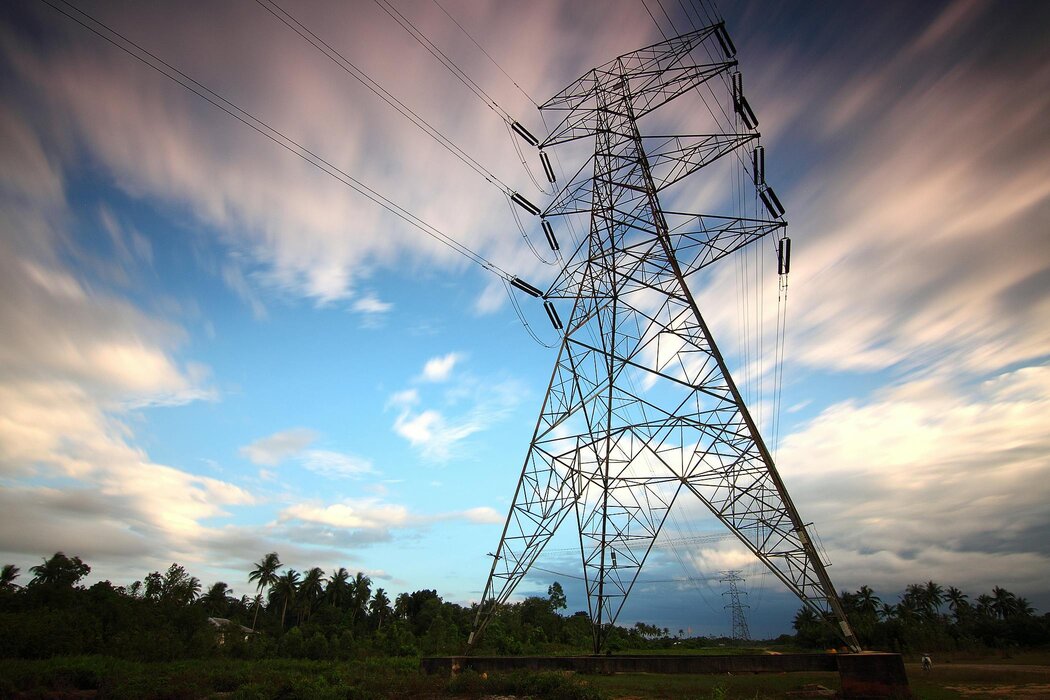Dashpivot Article – What is an Energy Assessment?
What is an Energy Assessment?
In this article, we'll comprehensively answer the question of "what is an energy assessment?" and provide you with guidance and resources on how to better conduct energy assessments.

Energy is used by all industries. Energy is used to run its operations, whether it comes from commercial, mining, manufacturing, construction, or even power plants. Energy is often one of the biggest slices of expenditure in every industry. In businesses and groups, it makes up a significant amount of the budget. As a result, businesses and organisations constantly look for methods to reduce their energy usage in order to save money and reduce their carbon imprint. An energy assessment is one of the finest ways to do this.
An audit of an industry's energy use is called an energy assessment. It also shows which sectors of a certain industry use a lot of energy. After obtaining this kind of information, businesses and groups may plan ways to reduce energy use in that area.
Levels of energy assessment as per ASHRAE
ASHRAE established several levels of energy assessments since there was a great deal of variation in the market around what actually constituted an energy assessment . ASHRAE Level 1, ASHRAE Level 2, and ASHRAE Level 3 audits are the levels for these various audit. A lesser audit will be enough for some industries, which don't have continuously operating machines that consume a lot of energy (e.g., commercial spaces that don't run 24 hours). For other industries, however, a more detailed assessment would be more beneficial, and research will be well worth the expenditure. An appropriately sized energy assessment will provide the ideal ratio of audit value to assessment expense. To understand these levels better, here is the breakdown for each ASHRAE energy assessment level:
Level 1
There is a walk-through ASHRAE Level 1 audit that can find energy efficiency measures (EEMs) while keeping the engineering time and costs for the report to a minimum. The total sum of money that each action is thought to save and cost is about the same. The short report mostly talks about low-cost and free measures, but when capital measures are found, they are also mentioned. A review of utility statistics, an estimate of the savings that would come with a rate change, the measurement of the energy use index, comparison, and targets are also in the study.
Level 2
The ASHRAE Level 2 assessment is more in-depth, and you need to be skilled and thorough to make a good assessment report. The Level 2 assessment includes a full description of the establishment, an inventory of all the equipment, an energy balance, a list of all the low-cost and no-cost measures that can be used to save energy and their costs, a financial analysis of each suggested measure, an outline of the costs and savings for any major projects, and a suggested plan for measuring and checking each suggested measure. The most likely type of energy assessment for bigger buildings is the Level 2 tests. The Level 2 audit strikes a mix between the need for strict engineering and the need to keep auditing affordable. The extra accuracy that comes with the Level 3 audit might not be worth the extra money.
Level 3
ASHRAE Level 3 assessments are meant to add more technical rigour to bigger, more expensive projects where risk is not as acceptable. Trend logs and data loggers are used to learn more about how the buildings respond to changes in usage and the environment. Hourly models are used to figure out how to measure HVAC. There are both detailed cost figures and life cycle cost studies. Usually, a plan of work and drawings are sent along with the audit so that the people who are putting in the measures know exactly what needs to be done. The papers have more in-depth explanations of the steps. Investment Grade exams (IGAs) are another name for Level 3 exams. Most of the time, these checks are part of a performance contract.
How should an energy assessment form be created?
The energy assessment form is the document used to collect all of the data for an energy assessment. This form should be set up in a way that will allow it to collect all of the important information needed for the evaluation. To make each portion of the forms clear and easy to complete, the elements therein should be divided into distinct sections.
Additionally, the form needs to be linear, with each part flowing logically into the next. Additionally, it makes it simpler to comprehend what information should be included in each part.
Finally, the evaluation needs to be based on a checklist. To have a good reference when choosing the appropriate actions to aid in energy saving, it is important to make sure that this checklist has all the necessary components.
Additionally, using a checklist makes the actual evaluation process simpler and less complicated.
Energy Assessment Form
You can see a good example of a energy assessment form below.

Use this free Energy Assessment Form format for free
Conduct better energy assessments with customisable checklist forms
Comprehensive Sections
The form is split into many parts, each focusing on important elements like lighting, HVAC, and water systems, therefore guaranteeing the evaluation of all pertinent energy considerations.
Systematic Approach
Every part offers thorough checklists for certain energy-related products, like insulation quality, lighting efficiency, and HVAC functioning, thus enabling a systematic review procedure.
Observation and Improvement Areas
It offers columns for proposed areas for development as well as for existing observations, therefore enabling a clear definition of present conditions and enhancing techniques.
Scalability
The shape is flexible and extensive in use, as it is relevant to many kinds of structures and amenities.
Actionable Recommendations
At the end of the assessment, the form includes a section for summarising recommended corrective actions based on the checklist findings, which aids in the practical application of the assessment results.
Attachment Support
There is provision for attaching relevant documents and photographic evidence, which supports the findings and recommendations with concrete proof.
Standardised Format
Comparative analysis and benchmarking depend on uniformity in energy assessments across many facilities; hence, the form's homogeneous structure helps to preserve such consistency.
What are the benefits of an energy assessment?
We should understand how energy assessment could help businesses and organisations in order to recognise its significance. Numerous sectors have validated and proved these advantages, making energy assessments a standard practice. It has been shown that there is always a positive return that these evaluations may provide to businesses. Companies and organisations may benefit from doing energy audits in the following ways.
Reduce Energy Consumption
When you do energy assessments, this would be the most noticeable impact. Identifying places with high energy use might be aided by doing energy assessments. With this kind of information at hand, businesses may optimise their energy use by searching for more cost-effective options, which can reduce energy costs, or develop energy-saving techniques that will help in energy conservation. The objectives for reducing energy use can be targeted and accomplished with this kind of strategic strategy.
Reduce Energy-Related Costs
In light of the fact that energy is effectively controlled via the use of energy assessments, the cost reduction for energy will be achieved. In the event that the appropriate actions are taken, which is inevitable given that energy assessments are carried out, this has the potential to provide a significant cost savings margin.
Increased Property Value
An energy assessment for a certain property may not only result in immediate cost savings, but it can also increase the property's worth over the long run. Industries that are efficient in their use of energy are becoming more appealing to potential investors because they recognise the financial and environmental advantages that come with lower energy usage. Companies and organisations may present their property as a more attractive and marketable asset by investing in energy upgrades for the purpose of implementing audit recommendations.
Helps the Environment
Through the implementation of energy assessments that enhance energy efficiency, it is possible to reduce carbon footprints. Additionally, businesses and organisations may reduce their emissions of greenhouse gases, therefore contributing to a more sustainable environment. By encouraging stakeholders to utilise energy in a more efficient manner, energy assessments help to reduce the demand for fossil fuels and other nonrenewable resources, therefore contributing to the conservation of natural resources. This will also assist them in investing in renewable energy sources, such as solar cell panels, to support the powering of their operations, which will further contribute to a healthier and greener environment .
Further improve your energy assessments with digital solutions
It is possible to improve the efficiency of the process of preparing various energy assessment forms across a variety of locations and projects by using a digital alternative. It makes it easier to simplify analytical reports across all forms and helps you standardise report formats, which improves accuracy and consistency, makes reporting easier, and simplifies the process.
If you and your team use Dashpivot energy assessment software to streamline the process of data collection and reporting, it will be much simpler for you and your team to readily exchange results and update reports from a wide variety of personnel and stakeholders.
You have the ability to automate features, make use of the drag-and-drop functionality, make checklists, enter prefilled texts and text fields, and connect photographs with markups, GPS, comments, and tags. If you want to conveniently gather data in real time, even when you are not connected to the internet, using your mobile device or tablet, you may add fields that are specially tailored to your needs. You will be able to simply complete site visit reports and provide your team members with the ability to view your documents and forms on their own mobile devices, tablets, and personal computers.
In addition, you can simply store all of your energy assessment forms in your own database, making it very simple for people to sign off on your papers and inform individuals at certain points of the approval process for your documents. Offer insightful information and make judgements based on correct and up-to-date data in order to provide relevant insights.

Environmental clearing
Streamline your environmental clearing permitting process

Gas safety check
Improve how you conduct and signoff on gas safety checks
Waste tracking
Improve how you document and track waste



